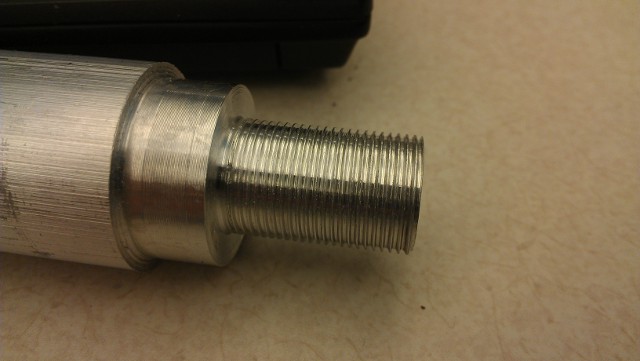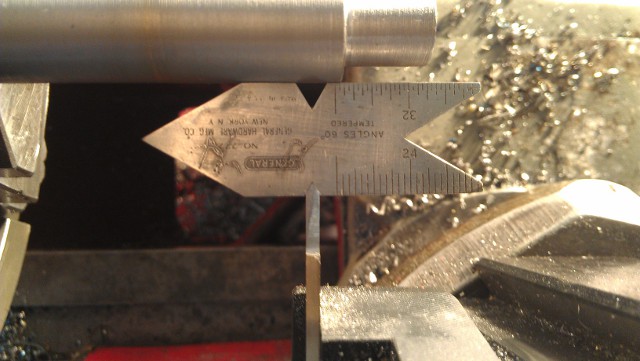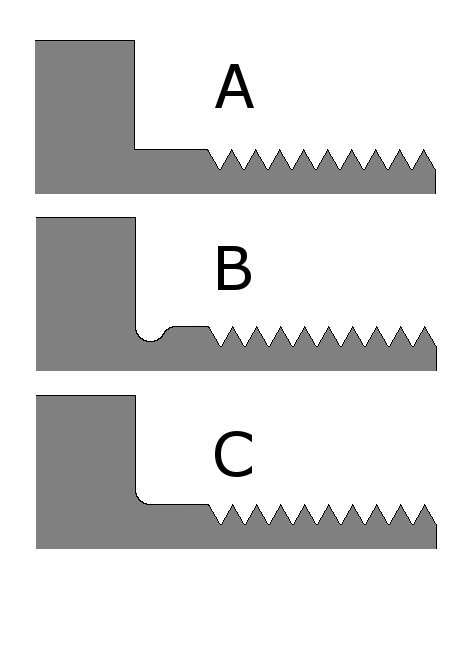I was going to wait until the rifle was all done before I posted this but it is getting the best of me. I will not show the rifle until it is complete. The Wyatt’s mag box still needs to be installed and I need to coat the rifle.
The specs are a Rem 700 Action, High Tech stock, Lilja #4 SS 10 Twist 375 Cal barrel finished at 26 inch’s and chambered in 375 Ultra Mag.
The first step was to get the action running true in the lathe fixture and after that cut and square the face of the action and clean up the threads. I apologize at the moment I cannot find my picture of the dial Indicator setup for the action truing or the chambering I think it was deleted by accident. Here is a picture of the results from that. I also lapped the lugs.

The next step was to indicate the barrel in the fixture and face the tenon off, cut it to length, turn the tenon down to 1.062 as that is what let the recoil lug fit tight on the tenon, and thread it. In case anyone was wondering the barrel and the action where both running under ½ a 1/10 thousands on the dial indicators. Here is the finished result.

The next step was to cut the boltnose recess and here is a picture after that was finished.

Now it is time to chamber.

Here is a picture of the rifle head spaced and finished.

I chambered this rifle tight and run out on the brass is 1 to 2 thousands of an inch as you will see here in a minute. Here is a new unfired case.

Here is the same case after it was fired.

Next was the bedding prep. I will get a picture of the bedding when I take the rifle apart for the mag box install.



The specs are a Rem 700 Action, High Tech stock, Lilja #4 SS 10 Twist 375 Cal barrel finished at 26 inch’s and chambered in 375 Ultra Mag.
The first step was to get the action running true in the lathe fixture and after that cut and square the face of the action and clean up the threads. I apologize at the moment I cannot find my picture of the dial Indicator setup for the action truing or the chambering I think it was deleted by accident. Here is a picture of the results from that. I also lapped the lugs.
The next step was to indicate the barrel in the fixture and face the tenon off, cut it to length, turn the tenon down to 1.062 as that is what let the recoil lug fit tight on the tenon, and thread it. In case anyone was wondering the barrel and the action where both running under ½ a 1/10 thousands on the dial indicators. Here is the finished result.
The next step was to cut the boltnose recess and here is a picture after that was finished.
Now it is time to chamber.
Here is a picture of the rifle head spaced and finished.
I chambered this rifle tight and run out on the brass is 1 to 2 thousands of an inch as you will see here in a minute. Here is a new unfired case.
Here is the same case after it was fired.
Next was the bedding prep. I will get a picture of the bedding when I take the rifle apart for the mag box install.
Last edited:















